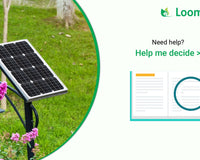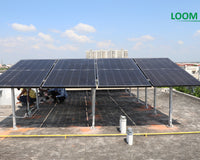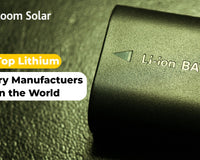Imagine a life without batteries; almost all lightweight and portable devices used by humans could be severely hindered, where the range of laptops and cell phone cables may hardly reach up to a mile. Making your Cycling, Exercise, or Workout apps that track the miles you traveled or calories burned through your smartphone almost worthless. Fortunately, we have batteries.
If you are a writer, professor, teacher, instructor, faculty member, researcher, scientist, doctor, or student trying to figure out how a battery works, you have come to the right place. That being said, how does the battery work? We will look at how the battery functions through this battery basics tutorial.
Perfect Energy Storage
2 times battery life, consumes 50% less space, needs no maintenance & takes 60% less recharge time
How does the battery work?
A battery is an electronic equipment or apparatus that uses an electrochemical oxidation-reduction (redox) cycle where electrons are passed from one substance to another with the help of an electric circuit to transform the chemical power or chemical energy stored by its active components freely into electric energy or electric power as per the University of Washington.
How does a battery work in simple terms?
The battery, according to another interpretation, is a device that saves and holds electric energy or electrical power as chemical energy and then transforms this chemical energy into electricity, according to Antoine Allanore, a postdoctoral associate in the Materials Science and Engineering Department at MIT.
What is the purpose of each of the components of a battery?
The battery includes three separate components, and around two terminals are formed of various chemicals, which are common metals. The terminals are divided into anode, cathode, and electrolyte. The electrolyte is the chemical layer that regulates and allows the flow of electrical current between the cathode and the anode.
How does a battery make a light bulb glow?
If a bulb is connected to a battery, chemical reactions happen across electrodes, resulting in an electrical current flowing towards the equipment. Particularly, during an electrical discharge, an oxidation process occurs in which the chemical on the anode transfers electrons towards the negative terminal and ions within the electrolyte.
Simultaneously, the cathode receives electrons toward the positive terminal, establishing a circuit to regulate and allow electron flow. The electrolyte aims to bring the anode and cathode various chemicals into touch. The chemical potential may remain stable between one terminal, transforming saved chemical energy into a consumable electrical current.
How do Rechargeable batteries work?
Rechargeable batteries, which are often found in most smartphones or automobiles, are built such that electric current from the external power source, usually your wall charger, is transmitted towards the chemical system, restoring its mechanism and replenishing its battery charge.
How do non-rechargeable batteries work?
When a battery is a non-rechargeable or disposable battery, it can supply power as long as the chemicals never exhaust; this is usually when both electrodes have the same chemical potential. Primary or non-rechargeable batteries can only convert chemical energy into electricity in one direction, making the reaction irreversible.
Conclusion
Since we have addressed the fundamental question of how batteries function, it is time to share your knowledge with the rest. If you want to know more about batteries and solar panels, you may refer to other articles.
Source:
https://depts.washington.edu/matseed/batteries/MSE/battery.html
https://engineering.mit.edu/engage/ask-an-engineer/how-does-a-battery-work/












